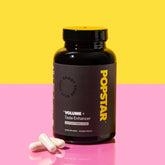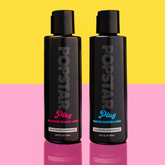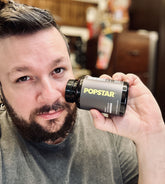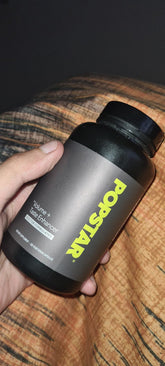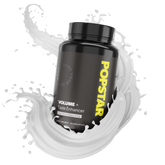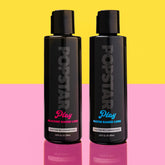A “Stroker” is a term often used in men’s health discussions to describe a specialized intimate device, or sometimes a technique, that focuses on promoting sexual well-being. Although the name might seem self-explanatory, it’s important to understand exactly how a stroker can support men’s sexual health, intimacy, and personal exploration. In this article, we’ll unravel the concept of a stroker in depth, addressing how it functions, its potential benefits, possible risks, and commonly asked questions surrounding its use. As you explore further, remember that every individual’s body, preferences, and medical history differ, so it’s always a wise choice to speak with a healthcare provider for personalized advice.
Table of Contents
- What is a Stroker?
- How Does a Stroker Work?
- Key Benefits of Using a Stroker
- Potential Risks and Considerations
- Frequently Asked Questions
- References
What is a Stroker?
A stroker is a men’s sexual wellness device primarily designed to provide an enhanced self-pleasure experience. It often features an internal channel lined with specially contoured textures or ridges that aim to replicate or complement a range of stimulating sensations. While some versions are purely mechanical, others can incorporate vibration or heating elements to support a sense of warmth and to widen the range of sensations.
From a medical glossary standpoint, the term “Stroker” is not a specific brand name but rather a general designation for any device or technique that involves consistent, repetitive motion targeting the male genital region. These devices typically cater to men who are looking to enhance their solo play, explore new forms of stimulation, manage issues related to erectile function, or ease performance anxieties. Because the marketplace for sexual well-being has expanded so significantly, strokers now come in a variety of shapes, sizes, materials, and design features.
In men’s health conversations, strokers are increasingly recognized as tools that can support healthy sexual exploration. They allow men to learn more about their bodies, their responses, and their personal preferences. Some individuals also find them useful for managing disuse atrophy or for refining sexual techniques in a comfortable, low-pressure environment.
How Does a Stroker Work?
Mechanically, a stroker works by creating friction or suction around the penis. Many models employ gentle pressure, adjustable tightness, and texture-based sensations to simulate the feel of different kinds of stimulation. Some have small vibrating motors that enhance sensation through pulsations or consistent vibrations, helping users customize the intensity and pattern.
When used, the device is typically paired with a water-based or silicone-based lubricant to reduce friction and ensure a smoother experience. The lubricated environment is crucial to preventing skin irritation and promoting comfortable, pleasurable use. The user grips the external portion of the device, guiding it along the shaft of the penis in gentle motions, or simply holding it still to let vibrations do the work. The added benefit is that this mimicry of sexual contact can help men maintain or improve erectile function.
From a practical standpoint, understanding how a stroker operates involves recognizing the combination of material science (like medical-grade silicone or thermoplastic elastomers) and ergonomic design. These features jointly produce a sensation that feels natural, yet can be personalized, depending on one’s unique level of sensitivity, preference for temperature changes, or desire for various friction intensities.
Key Benefits of Using a Stroker
Men’s sexual wellness is multifaceted, involving physiological, psychological, and emotional components. A stroker can offer numerous advantages, especially for those seeking to explore their bodies, overcome certain sexual challenges, or simply introduce variety into their intimate life. Below are some of the key benefits many men find when incorporating a stroker into their routine.
- Enhanced Self-Exploration: One of the most straightforward benefits is the improved awareness of personal pleasure points and responsiveness. This self-knowledge can translate into stronger, more satisfying partnered experiences.
- Stress Reduction: Sexual release, whether through intercourse or masturbation, has been known to help reduce stress. The tactile focus of a stroker can provide a heightened sense of relaxation and stress relief.
- Improved Sexual Confidence: For men dealing with performance anxiety, practicing alone with a device can build confidence, especially if they can identify the optimal levels of stimulation required for maintaining an erection or experiencing orgasm.
- Support for Erectile Function: In some cases, consistent use of a well-designed stroker can serve as a form of physical therapy for the penis. Regular blood flow and gentle stimulation can help maintain tissue health over time, particularly for individuals who may experience mild forms of erectile dysfunction.
- Variety and Novelty: Stimulation that diverges from ordinary masturbation or intercourse can break monotony and help users avoid “plateaus” in their pleasure. By varying texture, pressure, or vibration, men can rediscover enjoyment and rejuvenate their sexual routine.
- Therapeutic Applications: In cases of certain post-surgical recoveries or sexual therapy programs, strokers might be recommended by certain healthcare providers to aid in gentle rehabilitation and desensitization, especially if a patient is coping with anxiety or discomfort.
All these advantages contribute to a holistic sense of sexual well-being. However, individual experiences can vary, so it’s recommended that anyone with significant medical concerns consult a professional before using a stroker.
Potential Risks and Considerations
Like many products in the sexual health domain, strokers can carry potential risks if used improperly or without an understanding of basic safety guidelines. Although most are fairly low-risk, it’s important to be mindful of the following considerations:
- Hygiene Concerns: Because strokers come in close contact with the genitals, proper cleaning is crucial. Residual fluids and lubricants can harbor bacteria if not washed away correctly. Many strokers are made of porous materials, so check the manufacturer’s guidelines on how to properly clean, dry, and store them to avoid infections.
- Skin Irritation or Allergies: Some men have sensitivities to specific materials (like latex) or lubricants (such as those containing parabens or fragrances). Irritation, redness, or itching can occur. To minimize these issues, always test new lubricants on a small patch of skin, and choose medical-grade materials.
- Overstimulation or Desensitization: Excessive or very intense use of a stroker might lead to temporary desensitization. Although it’s uncommon for this to be permanent, it’s worth noting that massive overstimulation can dull sensations temporarily.
- Mechanical Damage: In the pursuit of strong suction or friction, users might inadvertently apply too much pressure. This can lead to abrasions or bruises. Always opt for comfortable pressure levels, and don’t push through pain.
- Misuse and Lack of Medical Guidance: Strokers are not a replacement for professional medical advice. If you’re experiencing chronic erectile dysfunction, severe pain, or other sexual health concerns, a clinical consultation may be needed to identify the root cause and possible treatments. Using a stroker without addressing underlying problems could delay necessary medical care.
Ultimately, most of these drawbacks can be minimized through sensible habits: choosing reputable products, reading instructions, using compatible lubricants, and cleaning thoroughly. By approaching a stroker responsibly, users can enjoy the device’s benefits without compromising their health or comfort.
Frequently Asked Questions
What kinds of materials are strokers typically made of?
Strokers are typically made of silicone, thermoplastic elastomer (TPE), or other body-safe materials. Medical-grade silicone is popular because it is non-porous and recognized for being hypoallergenic, making it easier to clean and less prone to harboring bacteria. TPE-based strokers often provide a softer, flesh-like feel, but may require more careful maintenance. Always check labels and opt for products labeled “body-safe” to ensure minimal risk of irritation or harmful chemical exposure.
Do strokers help with issues like premature ejaculation?
Some men find that practicing with a stroker can help them learn control over arousal and orgasm. By gaining familiarity with the sensations that precede climax, a user can gradually improve ejaculatory control. While no device alone can treat the underlying causes of premature ejaculation, a stroker may function as a useful training tool, especially when coupled with guidance from a therapist or healthcare provider specializing in sexual health.
Can using a stroker replace natural intimacy with a partner?
Generally, strokers are considered supplements to intimate experiences, not replacements. They can enrich one’s overall sexual repertoire, foster self-knowledge, and, in some cases, facilitate partnered play if both parties consent and want to experiment. However, interpersonal intimacy involves emotional and relational dynamics that no device can replicate fully. If you’re experiencing difficulty connecting with a partner, seeking counseling or couples therapy may be a more beneficial option.
How often should I use a stroker?
Frequency of use is largely dependent on personal preference and individual health considerations. Many men integrate a stroker into their regular masturbation routine, whether that’s daily, weekly, or occasionally. Pay attention to how your body responds; if you notice any irritation, discomfort, or signs of dependency, consider adjusting your usage or consulting a healthcare professional for personalized guidance.
Is there a particular type of lubricant recommended?
Water-based lubricants are most commonly recommended because they’re compatible with most stroker materials and are generally less likely to cause irritation. Silicone-based lubricants can provide a longer-lasting slickness but may not be recommended for all stroker materials, as repeated use can degrade certain surfaces. Read the product instructions carefully for compatibility, and if you have sensitive skin, look for lubricants labeled “hypoallergenic” or “for sensitive skin.”
What should I do if I experience pain or discomfort?
If you experience significant pain, burning, or lingering soreness, stop using the device. Let the area rest, and observe for any persistent redness or swelling. If symptoms continue, consider visiting a healthcare provider for an evaluation. Persistent discomfort could be related to an improperly fitting device, overuse, an allergic reaction, or an underlying medical condition.
Can I share my stroker with a partner?
Sharing a stroker is typically discouraged for hygienic reasons. If a stroker is used by more than one individual, there’s an increased risk of transferring bodily fluids, bacteria, or sexually transmitted infections. Some stroker designs might allow for the use of a body-safe barrier, such as a condom. However, for general advice, each person interested in using a stroker should have their own device to reduce health risks.
Are there any age-related limitations?
In terms of purchase and usage, strokers are typically sold to adults who are of legal age in their region. Physiologically, an older adult can still benefit from a stroker if they experience decreased libido, erectile challenges, or difficulties achieving orgasm. In some cases, healthcare practitioners may even suggest a stroker for older individuals who want to maintain healthy sexual function. Ultimately, there is no strict upper age limit as long as the user is mindful of their comfort level and any pre-existing conditions.
Can a stroker benefit men with erectile dysfunction?
While a stroker is not a direct treatment for erectile dysfunction (ED), it may serve as a supportive tool in a broader therapy plan. Gentle, consistent stimulation can help maintain blood flow and potentially foster a more positive sexual experience. Some men find that this consistent, controlled environment lessens performance pressure. If you’re regularly dealing with ED, it’s important to consult with a healthcare provider to address the underlying causes, which may include hypertension, diabetes, psychological stress, or hormonal imbalances.
Do I need to consult my doctor before using a stroker?
Most healthy men can safely use a stroker without needing prior medical clearance. However, if you have specific conditions such as severe erectile dysfunction, Peyronie’s disease, chronic skin conditions, or ongoing infections, you may benefit from speaking with a physician or urologist. They can offer personalized recommendations or caution you about particular device features that might exacerbate your condition.
How do I clean and store a stroker properly?
Cleaning and storing a stroker properly is critical for preventing bacterial growth and material degradation. Typically, you’ll rinse it thoroughly with warm water and mild, fragrance-free soap. Some manufacturers also produce specialized cleaning sprays or solutions formulated for adult toys. After washing, pat the stroker dry with a clean towel and allow it to air-dry completely before storage. When not in use, keep it in a cool, dry place away from direct sunlight to preserve its integrity over time.
Could a stroker harm my ability to enjoy traditional intercourse?
In most cases, using a stroker does not diminish one’s ability to enjoy intercourse with a partner. While it’s true that excessive or highly intense forms of stimulation might lead to a temporary shift in sensation or expectations, many men find that moderate, mindful use actually increases self-awareness and fosters more satisfying partnered experiences. If you’re concerned about developing a reliance on a stroker, consider varying your methods of sexual stimulation and using the device as one component of a broader sexual wellness routine.
References
- National Institutes of Health. Sexual Health Overview.
https://www.nih.gov - Cleveland Clinic. Men’s Sexual Health & Urology.
https://my.clevelandclinic.org/health - Mayo Clinic. Sexual Health & Intimacy.
https://www.mayoclinic.org
